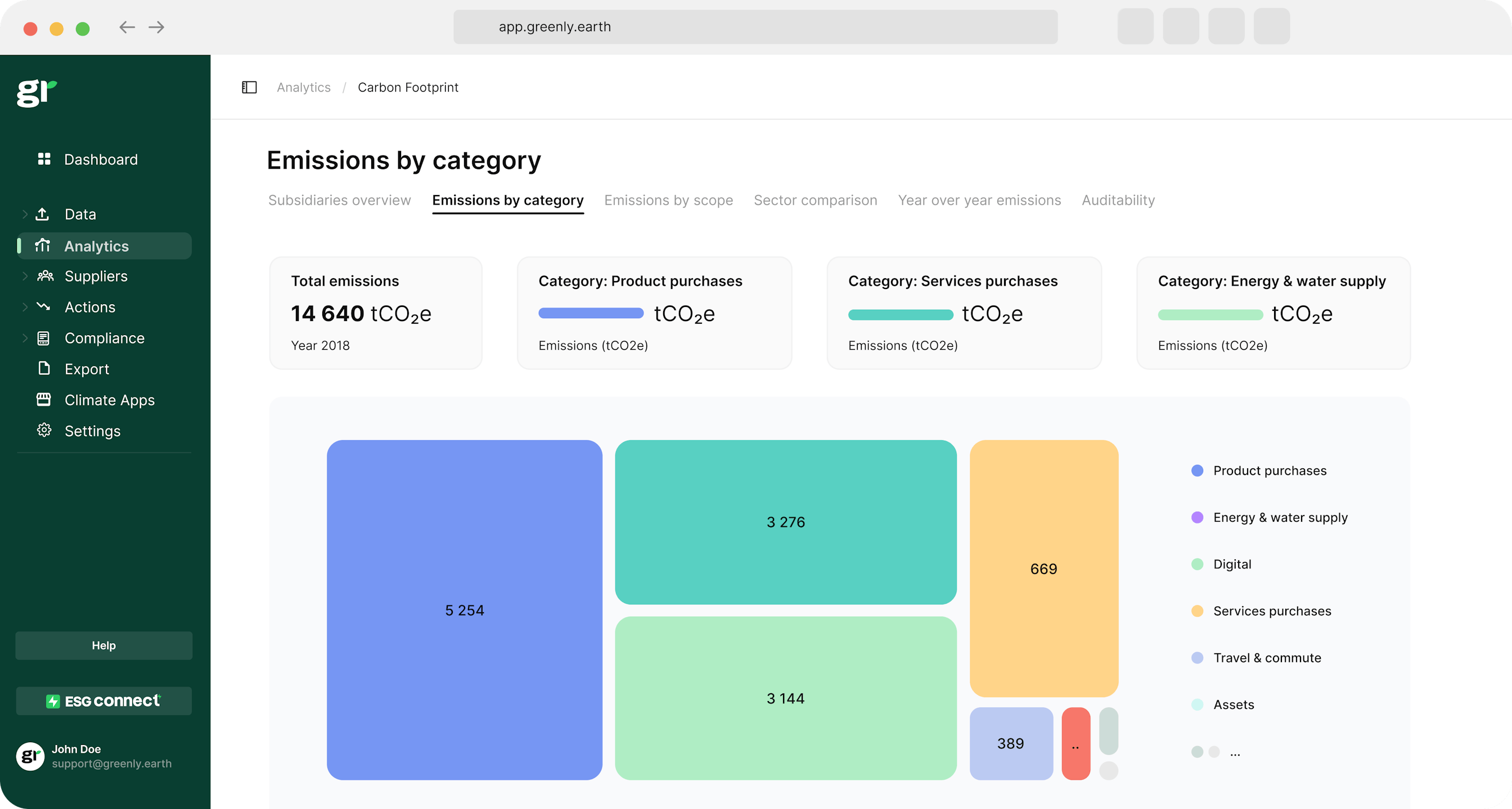ESG / CSR
Industries
How Raising Awareness Can Become Counterproductive



In this new age of sustainability and social media, celebrities and influencers alike are taking new stances in terms of climate change by voicing their opinions frequently and collaborating with relative partnerships to use their platform to create a positive impact – but can raising awareness and its repetitive nature do more harm than good?
Raising awareness regarding the current global warming circumstances is important, but it needs to be done in the correct quantity and quality to yield successful – otherwise, raising awareness could elicit new consequences.
In this article, we’ll explain what raising awareness entails, why it’s important, and why going overboard on raising awareness isn’t always the smartest idea.
What do we mean by “raising awareness”?
In the context of climate change, raising awareness refers to any effort to educate people on the cause and effects of global warming – usually, as a way to encourage people to adjust their everyday lives to reduce their potential impact.
💡Raising awareness can help to make people more cognisant of their daily activities and the GHG emissions they emit – such as Americans, where 87% of people use private vehicles for transportation, which causes GHG emissions to skyrocket in the country.
Examples of Raising Awareness About Climate Change
- Social Media Influence – From TikTok to Instagrams, popular influencers can share sustainable products and ideas with their followers to encourage them to learn more about the effects of climate change.
- Celebrity Endorsements – When celebrities promote eco-friendly cosmetics and clothing, such as at the most recent Met Gala, it provokes curiosity amongst fans to delve deeper into the world of sustainability in the beauty and fashion industry.
- Educational Campaigns – Various workshops, seminars, and events on college campuses can help people to spread awareness and academic knowledge on the effects of climate change. In addition to attending the event, hosts will often share pamphlets or brochures – enticing attendees to conduct their own research and further educate themselves on climate change.
- Documentaries – Whenever you watch something on Netflix like Forks Over Knives, which explains the benefits of veganism – you are indirectly cultivating new knowledge on a very niche topic. Therefore, documentaries serve as a great platform for raising awareness on climate change – as its often easier to sit through an edited piece of media than it is to attend an in-person event.
- Public Movements & Strikes – Environmentalists and youth activist groups may go as far as to organise a climate march, such as with the Global Climate Strike and FridaysForFuture – which can help to make a bold statement on current legislation and the need for greater action.
- Business Efforts – Companies that make an effort to employ the use of renewable energy and advertise their environmental progress as a selling point for new customers indirectly contribute to raising awareness on climate change.
- Policy Advocacy – Online petitions, such as via change.org, can urge people to support the need for greater climate action – such as by calling for a net-zero movement or banning the use of plastic packaging.
- Art, Music, Movies & Other Multimedia – Perhaps the most appealing way to raise awareness on climate change, artists can create songs, movies, and other pieces to depict the current impact of climate change. A perfect example of this is when Shawn Mendes released a song called, “What The Hell Are We Dying For?” to raise awareness on the current global circumstances.
👉 Overall, raising awareness is often the first step to fight against climate change – as people cannot adjust their actions accordingly without knowing how to effectively reduce their household or business emissions, and won’t have the proper incentive without all of the necessary information that usually comes from campaigning.

Why is raising awareness on climate change important?
Raising awareness on climate change is important because it can not only shed light on how an individual or businesses’ daily actions impact the environment, but can present potential solutions to mitigate further impact and support the cause at hand.
💡 In the same way that cosmetic, fashion, and technology brands need to advertise their products in order to make a sale – voluntary causes need to illustrate the current impact of their situation, such as climate change, to recruit more people to make a difference.
Furthermore, many people do not understand how one action can implicate another – such as how deforestation can release excess carbon dioxide emission into the atmosphere. This can help everyone, from tourists to new business owners, to make more educated decisions and adjust their actions to avoid worsening the situation.
Here are some more reasons why raising awareness on climate change is important:
- Inspire Change – Raising awareness can motivate people to adapt green living practices, such as by opting for public transportation or purchasing products which use sustainable packaging. Furthermore, raising awareness can help to inspire new technologies and ideas to tackle climate change – such as with the development of carbon capture and storage.
- Development of New Policies – New environmental legislation can be born out of local desire for change, such as with California’s climate legislation – out of residents values to protect their surrounding environment.
- Boost CSR – Corporate Social Responsibility (CSR) is becoming increasingly important, as stakeholders are beginning to value more than a company’s financial prospects – but it manages its operations as a whole. This means that raising awareness on ESG issues and climate change can ultimately help companies to become more well-rounded and more appealing to stakeholders.
- Protect Vulnerable Regions – Certain areas of the world, such as Southeastern USA, remain exceptionally prone to the negative effects of climate change. Although people living in states such as Maryland, Maine, and Vermont are not as affected – they may feel indebted as Americans to support their neighboring states in getting stronger climate change action off the ground.
- Prevent Misinformation – Even though social media can be a great way to spread information quickly, it isn’t always the most reliable source – making it important to ensure that the public understands the science and urgency behind popular claims regarding climate change.
- Preserve the Environment – Although this may seem like a given, raising awareness on climate change can actually make a real difference – as people may feel more driven to be aware on how their actions may impact biodiversity, deforestation, and air pollution.
👉 Ultimately, raising awareness on the current impacts of climate change can help individuals, businesses, communities, and non-profit organisations alike to become more conscious of their everyday decisions, adhere to more sustainable behaviors, and join forces to develop innovative ways to tackle climate change.

Why does raising awareness not always yield good results?
Raising awareness may not also be the best method to inspire action as people can easily get irritated with constant campaigns and criticism of their current actions.
💡A good example of how raising awareness can be counterproductive is with the most recent presidential campaign, where Kamala Harris heavily focused on women’s reproductive rights – which caused voters concerned about the economy to feel unheard. If Harris had attempted to spend time on other issues, it’s possible that there would have been less adversity towards her presidential campaign.
Here’s a breakdown of how raising awareness can sometimes prove counterproductive:
Spreading Misinformation
Raising awareness, while good, is sometimes done without fact checking for fake news – which can leave room for error in the information to be provided.
As a result, raising awareness could cause people to receive incorrect statistics regarding a certain issue – which they may post online or tell their family and friends and contribute to the misread of information.
💡Therefore, it is imperative when raising awareness to verify all information before holding a campaign or drafting any posts to be published. Otherwise, raising awareness could backfire and lead people to develop misconceptions regarding an issue as sensitive as climate change.
Oversimplifying Complex Issues
Many complex issues, such as climate change, require nuanced discussions for a full understanding. As this also requires time, people may not have the patience or bandwidth to dedicate their time to fully understanding an issue – leading campaigners to simplify an issue that merits more time for a full explanation.
Although this could help make information more approachable for the average person, simplifying information means leaving out idiosyncratic details which will allow people to better understand the potential solutions and how their actions contribute to the issue at hand.
For example, telling people with a slogan to, “ditch meat, it ain’t green” might get them to eat less meat – but they wouldn’t understand why eating meat creates an environmental impact. As a result, people won’t know how eating meat actually impacts the environment – only that it does.
👉 In laymen’s terms, the devil is in the details – and that couldn’t be more true when it comes to climate change.
Overexposure
Sometimes, too much awareness can lead to overexposure – such as with Taylor Swift and her Eras Tour. While this was the most successful musical tour of all time, Swift’s constant appearance in the media began to irk even the biggest of Swifties.
The same goes for campaigns, as it dilutes the excitement and motivation surrounding the issuing question. Furthermore, constantly raising awareness can lead to desensitisation, in the same way someone will grow used to cold winters in Iceland – people constantly hearing about climate change are bound to become ambivalent.
Think of scrolling past the same social media ad you’ve seen a million times. The same can go for raising awareness for issues even as pivotal as climate change, as people are prone to develop awareness fatigue.

Fine Line Between Awareness vs Sensationalism
There is a fine line between raising awareness and sensationalism, as greenwashing exists and some people may show off certain eco-friendly tactics for ulterior motives.
This means that some brands may focus on harsh statistics merely to gain the attention of a social media user or someone in person, leading to unnecessary fear surrounding a situation as delicate as climate change.
👉 Ultimately, this can make it challenging for people to contribute to practical solutions – which in turn, will make fighting against something like challenging all the more difficult.
Annoying People and Causing Backlash (Psychological Effect)
From a psychological perspective, known as the reactance theory – people are less likely to help with something if they feel it will inhibit their current freedom. This is usually the case with climate change, as people will feel that too many of their daily habits will need to be changed in order to align themselves with globalised goals to reduce emissions.
This is why raising awareness can sometimes feel like manipulation or guilt-tripping, both of which do not provide people and businesses with the intrinsic motivation they need to be successful in adhering to the original goals of a campaign.
💡Therefore, making an effort to not single out anyone’s current behaviors or refer to repetitive campaigns can help to make raising awareness more effective.
In the end, raising awareness is an important part inspiring change – but it needs to be done in a manner to avoid these listed negative consequences.

How can we find a balance for raising awareness to avoid overexposure?
There are several ways we can continue raising awareness without risking overexposure, such as by creating different campaigns, monitoring audience feedback, and seeking quality over quantity.
Here are some ideas to continue raising awareness without creating backlash:
- Diversify Messages & Platforms – Instead of posting your ad or hosting your campaign in the same place at the time repeatedly, try to diversify your message on various platforms to avoid the risk of consumer fatigue.
- Recruit New Speakers – Having an expert provide their experience and insight could refresh people’s excitement for the cause, such as by having a famous person who was personally affected by a certain disease speak to an audience at risk for the same health issue.
- Monitor Audience Feedback – Making an effort to assess how your campaign is currently received can help you to make the necessary adjustment to prevent over saturation, annoyance, and the negative consequences of the reactance theory.
- Quality Over Quantity – Campaigns and advertisements, especially to businesses, often operate under the false illusion that bigger and more repetitive is better – but that isn’t necessarily the case. Striving to craft short but powerful messages can be more effective than bombarding your audience with constant campaigns.
The table below will break down the ways to ensure raising awareness does not become counterproductive:
| Principle | Explanation | Examples |
|---|---|---|
| Fact-Based Messaging | Ensure all information shared is accurate, up-to-date, and backed by reliable sources. | Citing scientific studies or verified statistics when discussing an issue. |
| Avoid Fearmongering | Refrain from over-dramatising or using scare tactics that might alienate or overwhelm the audience. | Sharing balanced content that highlights both challenges and potential solutions. |
| Focus on Actionability | Provide clear steps or actions individuals can take to contribute positively. | Including tips for recycling or links to petitions in campaigns. |
| Respect Cultural Sensitivities | Be mindful of cultural, regional, or societal norms to avoid offending or alienating groups. | Customising campaigns to suit diverse audiences without stereotyping. |
| Encourage Dialogue | Create opportunities for discussion and feedback to foster understanding and collaboration. | Hosting Q&A sessions or community forums. |
| Avoid Overexposure | Limit the frequency of messages to prevent audience fatigue or desensitisation. | Strategic timing of campaigns to maintain interest and effectiveness. |
Overall, raising awareness is an essential part of eliciting change – but it needs to be done in a manner to limit overexposure and maintain a positive relationship between your cause and the audience.
What About Greenly?
If reading this article on how raising awareness regarding climate change can be counterproductive has inspired you to consider your company’s own carbon footprint, Greenly can help.
At Greenly we can help you to assess your company’s carbon footprint, and then give you the tools you need to cut down on emissions. We offer a free demo for you to better understand our platform and all that it has to offer – including assistance with boosting supplier engagement, personalised assistance, and new ways to involve your employees.
Learn more about Greenly’s carbon management platform here.





